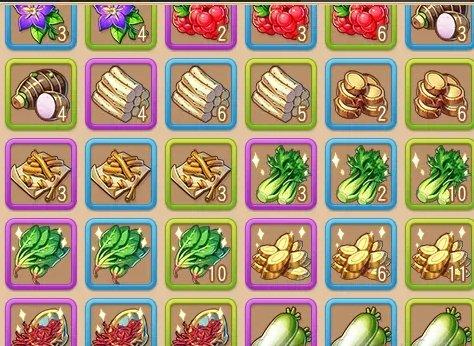How to get the highest profit from farming in the Fantasy Westward Journey mobile game workshop. This time players can smoothly experience all the content of the game. To help everyone experience the game better, the following editor will bring you how to get the highest profit from farming in the Fantasy Westward Journey mobile game workshop. , I hope you guys have fun playing the game.

Details on how to increase farming income in the Fantasy Westward Journey mobile game workshop
income statement
The income in the table is ordinary output, sunny weather, no fertilization, no assistance, and no attributes.
This article mainly introduces the actual benefits, how to produce more efficiently, and how to produce higher returns.
Different types of players are suitable for different plant cultivations


In addition, there are some ways to save costs and improve product quality which will be mentioned below.
First, let’s talk about how the minimum energy consumption is calculated:
Taking rice as an example, the upper limit of moisture is 48 points. If 50% of the moisture is initially given, it is harvested at 24 points and 8 hours. As long as the moisture value is above 1 point during harvest, it will be fine. The 8th Water is also consumed once when harvesting.

For example, this Bupleurum is just stuck with 4 points of moisture left during harvesting.
Hard-working players can keep the water value at 48 for the first five hours, then they don’t need to replenish water for the last three hours and just wait until the harvest.
If you are not diligent enough, you will often get stuck at the point where you want to harvest and consume all the water. At this time, you have to replenish the water before harvesting, which will consume extra energy.


What impact do weeds have? Is it necessary to get rid of it?
Weeds have little impact on the harvest of plants, but they will cause additional water consumption. Newly planted plants consume 10 points of energy to weed weeds, which will save the subsequent energy required for additional water consumption by weeds.

Weeds don’t have to be removed. For example, weeds like the following are about to bear fruit and will bear fruit for the last time, so they don’t need to be removed.

But this Gastrodia elata, for example, is about to bear fruit. In theory, there is no need to water it anymore, but it has only fruited three times now, and there will be two more in the future, so watering and weeding are also needed.

If the workshop production is not for silver coins, but for gold coins, then you can calculate the price of each crop × the number of pieces that can be produced ÷ the energy consumed


Taking honeysuckle as an example, 79*6/133*0.91 (after tax) = 3.24 gold coins per vitality (this vitality-to-yield ratio is very high, and the workshop stalls are separated from ordinary stalls and do not occupy ordinary stalls.
Careful players will definitely find that some functions are loss-making. 1 vitality can be directly worked for 1 gold coin, and directly exchanged for silver coins is 100, but here it is only 92. It is simply a thankless effort.

But the calculations in my table are for ordinary crops, because our output has a probability of producing rare and precious quality. The price of rare workshops is 2 times that of ordinary ones, and the price of rare ones is 4 times that of ordinary ones.
Take a look at the probability of being rare and precious

For both numbers, without bonuses, the calculated rarity rate is about 13.5%, and the rarity rate is about 28.5%.

The income that actual output can generate without any bonuses and other assistance


In this way, the average cost of each piece of vitality is about 260~300 silver coins.
Then if we only recycle the precious ones, that would be it

Then take out the rare and common ones and sell them for gold coins

Taking Panax notoginseng as an example, 1 vitality can produce (2.04 gold coins + 118.57 silver coins), which is the most cost-effective
